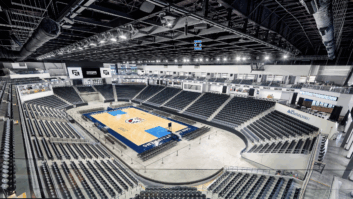The importance of responding to more flexible working patterns and ensuring that effective face-to-face communication remains embedded in the workplace are among the key findings of recent research undertaken by Jabra, a leading developer of AV conferencing technologies.
Generation Z – which is generally regarded as relating to people born from the mid-1990s to the early 2010s – is a primary focus of the research contained in Jabra’s Mind the Gap: How Gen Z is Disrupting the Workplace in 2024. Jabra’s Hybrid Ways of Working Global Report also addresses the challenges currently shaping the workplace, the role of video-conferencing and other technologies in effective hybrid working, as well as the need for organisations to stay one step ahead as the expectations of younger employees continue to evolve.

Whilst revealing that a partial return to the office is occurring, Jabra’s global report confirms that hybrid working remains the dominant work trend. A remarkable 62% of all meetings now occur in meeting rooms, with 80% of all gatherings including at least one remote participant. Within this trend, the growing significance of the digital-native generations is in no doubt; at present, Gen Zers and millennials make up approximately 38% of the worldwide workforce, and this percentage is set to rise to about 58% by 2030, according to the Mind the Gap… report.
The research also underlines the enduring importance of face-to-face communication among Gen Z, with 34% of respondents declaring this to be a key factor in making them feel connected with their colleagues. In addition, seeing and interacting with colleagues – whether in-person or on video – was found to be the most important reason for employees feeling a sense of belonging at work.
CONFERENCE CHALLENGE
But if the impulse to have high-quality video-conferencing systems that support remote meetings could hardly be clearer, it’s a surprise to find that more than 80 million meeting rooms globally are yet to be equipped with video technology, which confirms that there is still much to be done in equipping workplaces for the hybrid era.
Jabra is at the forefront of technology developers addressing the hybrid workplace, with a host of powerful and easy-to-use products, including full-room and BYOD solutions such as the Jabra PanaCast 20 camera for hybrid working (pictured), and the Jabra PanaCast 50 portfolio, offering choice and flexibility for meeting room and video-conferencing needs.

Specific products in the PanaCast 50 range include the Video Bar System, which incorporates a world class-leading Android collaboration bar equipped with everything customers need for the best Microsoft Teams Room and Zoom Room experience. The Video Bar System is also easy-to-use, manage and install; affords a unique 180-degree field of view to ensure all participants are captured and feel engaged; and benefits from the latest AI-powered features, including Virtual Director, automatically detecting who is speaking, focusing on them.
In a fast-changing workplace communications marketplace, Jabra is continuing to evolve its portfolio so that customers can benefit from new features and functionality that mean they are always able to adjust swiftly to new video conferencing needs.
To find out more about Jabra’s hybrid latest workplace research and Jabra PanaCast 50 video solutions, please click here.







